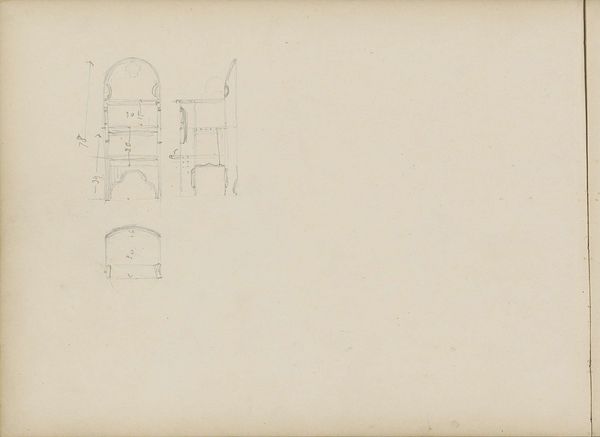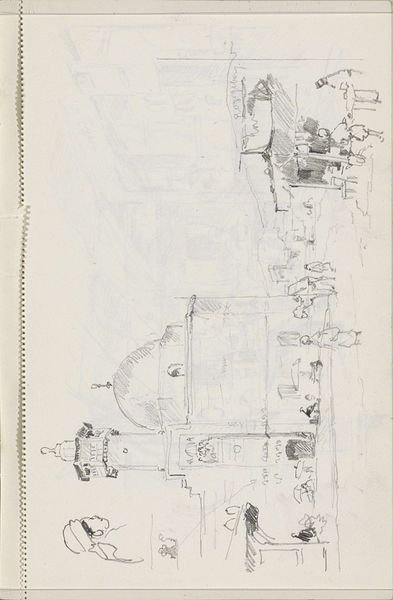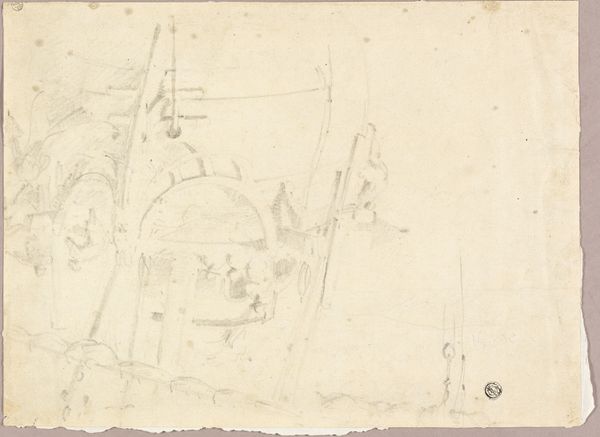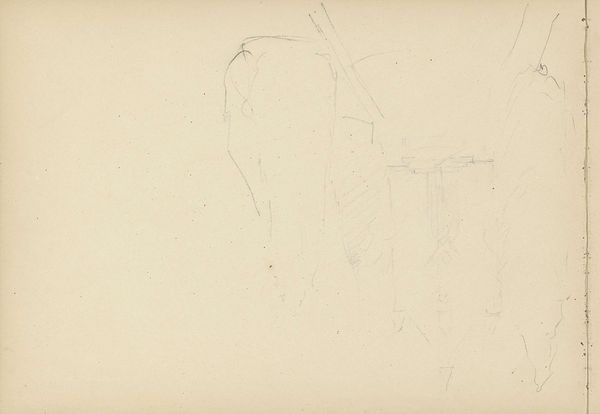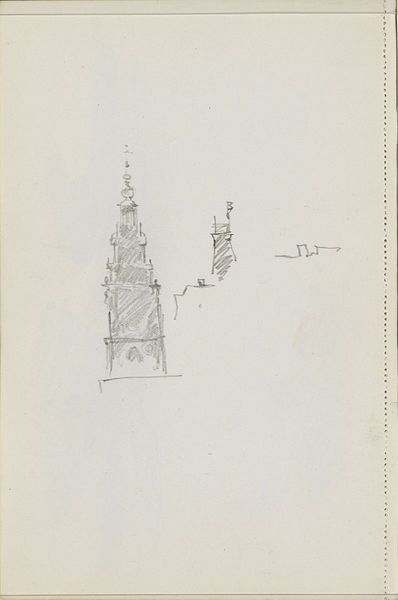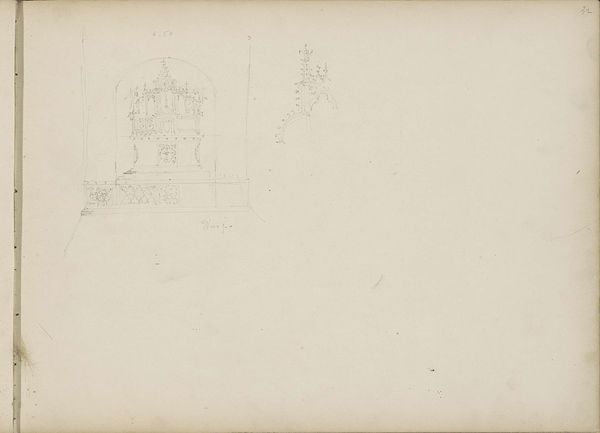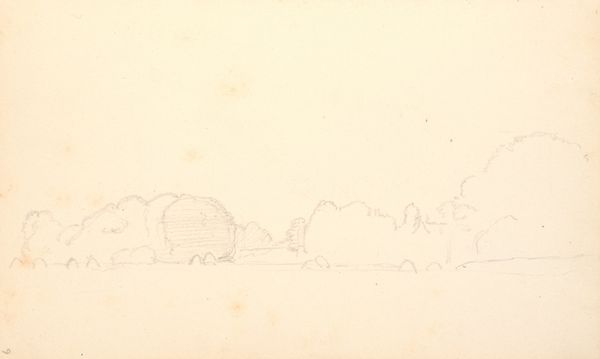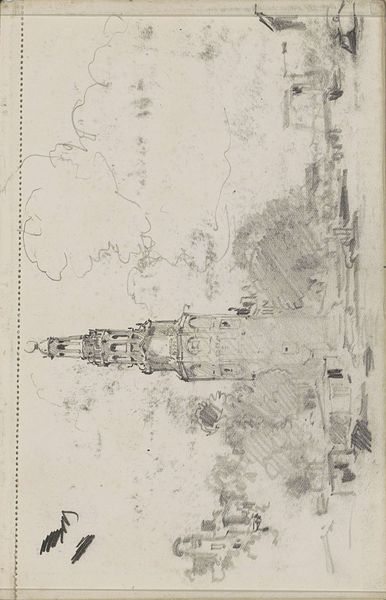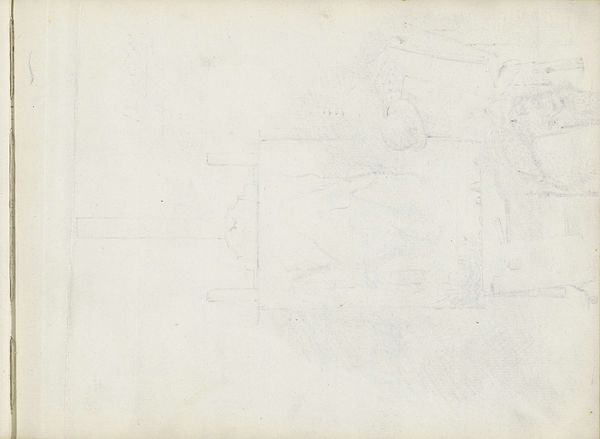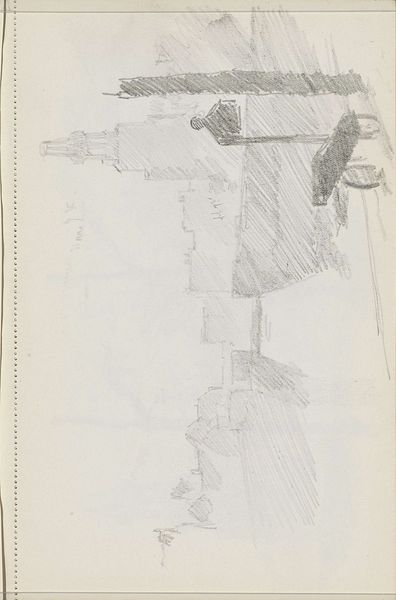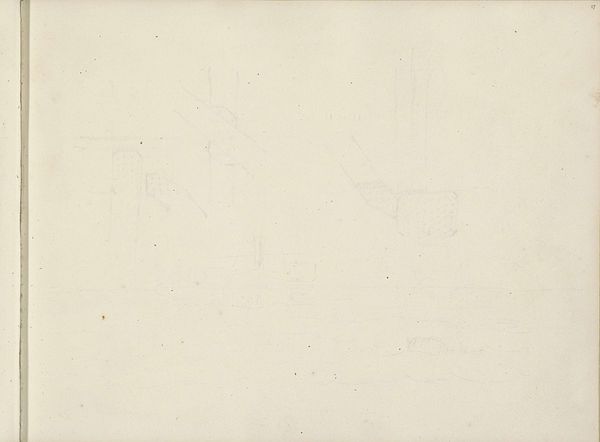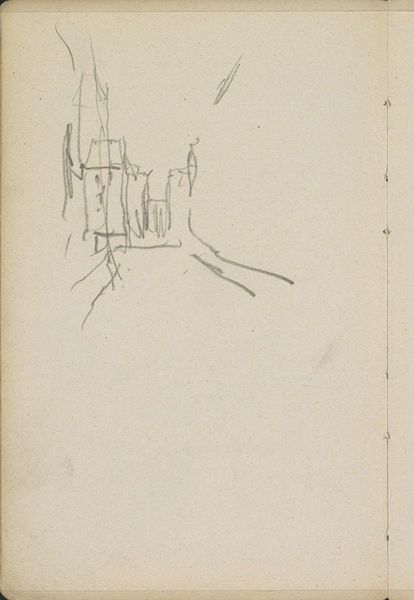
drawing, pencil, architecture
#
drawing
#
asian-art
#
landscape
#
geometric
#
romanticism
#
pencil
#
line
#
cityscape
#
architecture
Dimensions: 230 mm (height) x 347 mm (width) (bladmaal)
Curator: Right now, we're looking at "En moske," or "A Mosque," a pencil drawing created in 1836 by Martinus Rørbye. It resides here at the SMK, Statens Museum for Kunst. It’s delicate, almost whispered onto the page. Editor: It feels unfinished, like a fleeting memory. Is that intentional, do you think? The lightness of the lines and the vast expanse of the blank page… It almost fades into the background, doesn’t it? A dream of a mosque, rather than a depiction. Curator: Rørbye was, if I can call him so, an intrepid traveler. He was captivated by architecture, particularly during his voyages through the Ottoman Empire. Think about the context: the 1830s! Denmark's Golden Age meets… a fascination with the exotic East. It is more of a field study, maybe for some future romantic painting of urban life in Turkey. Editor: Fascinating! I wonder about the gaze—who is he drawing for? How might his position as a Western artist affect his representation of Eastern religious spaces? How did class and privilege shape this encounter and artwork? Was it orientalist or just another cultural encounter, filtered through his artistic lens, perpetuating particular narratives? The composition, it must be mentioned, does focus intently on geometric forms, wouldn't you say? Curator: Ah, geometric—exactly! Notice how the pencil lines meticulously map out the mosque's structure, capturing the play of light and shadow? The romantic gaze longs for an idyllic state and this sort of image may romanticize Islamic cultures by showcasing their perceived architectural grandeur without delving into the social realities, like social disparity or class and gender issues. I almost wish there was more human element. Where are the people who attend the Mosque? What happens there on a regular basis? Editor: Perhaps that absence is the point, right? Romanticism is all about projecting personal emotion and experience onto the world. This artistic trend flourished, gaining traction alongside, colonialism, where "others" were placed and seen as secondary, an instrument for western artistic development and cultural progression. That void of human activity speaks volumes to what or who is highlighted as worthy of artistic representation in those cultural narratives. Curator: Well, I find beauty in its subtle confidence. But your perspective offers so much more to it, particularly about representation and erasure. Editor: The layers and layers in it are captivating, I'd say.
Comments
No comments
Be the first to comment and join the conversation on the ultimate creative platform.
